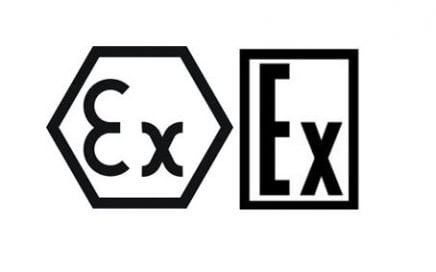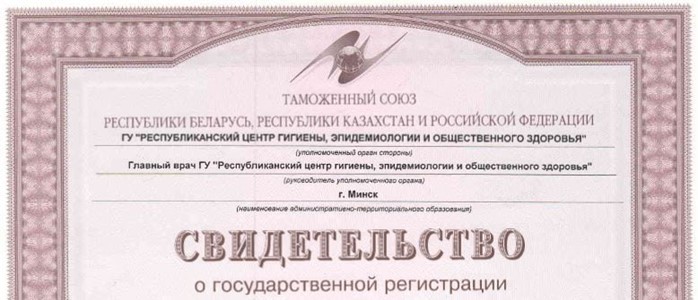What Is This EAC Marking?
Before answering this question, it is necessary to understand the following issue;
What is the Eurasian Economic Union (EAEU)?
The Eurasian Economic Union (EAEU) is an international economic union and free trade area comprising countries located in Central and Northern Asia and Eastern Europe. Belarus, Kazakhstan and Russia were founding members of the union, and later Armenia and Kyrgyzstan were included.
It is estimated that around 200 million people live in the member states and the EAEU countries have a combined GDP of US$5 trillion.
What is EAC marking?
The EAC mark is equivalent to the CE mark in the Eurasian Economic Union. The EAC logo can be found on the packaging or labelling of almost every product sold in Russia.
Every time we see an EAC logo, we know that the product bearing it complies with the CU TR Technical Regulations, which constitute the so-called EAC, or Eurasian Union Community, regulations. This set of regulations, most of which came into force between 2011 and 2013, represents the culmination of the process of Community integration and regulatory harmonization between Russia, Belarus, Kazakhstan, Kyrgyzstan, and Armenia.
Compliance with EAC regulations is achieved after an assessment process involving different parties, and can never be based on a manufacturer’s self-certification.

The EAC marking must be carried out according to very precise rules:
- The EAC logo must have a minimum size (5 mm)
- The letters can be white with a black background or black with a white background, but always in a specific font.
- The EAC logo must be applied to the label or container of each product, as well as on the packaging.
- Marking must be completed before arrival at Customs.
The legal basis of EAC marking: EAC Declaration and Certificate of Conformity and State Registration
There are only three documents that authorize EAC marking:
EAC Declaration of Conformity
EAC Certificate of Conformity
State Registration Certificate
All three contemplate very different procedures for their obtention: from procedures based on documentation for certain types of EAC Declarations of Conformity, to certifications that involve testing in official Russian laboratories, as well as periodic inspections at the manufacturer’s facilities.
Validity and loss of validity of the EAC mark
It is not enough to have completed a certification procedure in order to carry out the EAC marking. The EAC Declaration of Conformity, the EAC Certificate of Conformity, or the State Registration that represent the legal basis for the EAC marking need to still be in force when the export is carried out.
Besides reaching its natural expiration (one, three, or five years), a document can cease to be in force for different reasons: the loss or suspension of the accreditation of one of the parties involved, voluntary revocation by the applicant, disputes with the relevant bodies, etc.
The procedure by which you can find out the status of a Declaration, Certificate or State Registration, is very straightforward, and is achieved through accessing the official Russian websites in the corresponding sections:
EAC Declarations of Conformity
https://pub.fsa.gov.ru/rds/declaration
EAC Certificates of Conformity
https://pub.fsa.gov.ru/rss/certificate
State Registration (link may vary)
https://portal.eaeunion.org/sites/odata/_layouts/15/Portal.EEC.Registry.Ui/DirectoryForm.aspx?ListId=0e3ead06-5475-466a-a340-6f69c01b5687&ItemId=231# (Bağlantı değişebilir)
You simply need to enter the document number or company name in the corresponding field, and then carry out the search. After accessing the file, the word ДЕЙСТВУЕТ on the upper right part of the screen confirms the validity.
EAC Certificate of Conformity
The EAC Certificate is the most important document with regards to exporting to the Eurasian Union.
As was (and is) the case with GOST, it is the technical regulations themselves that establish which products require an EAC Certificate of Conformity and which products require an EAC Declaration of Conformity, in order to be marketed within the Euroasian Economic Community.
Concerning GOST regulations, EAC Certificates are innovative in three specific ways. The Applicant, the Technical Passport, and the last is the procedure governing how to obtain this certificate;
it consists of the following 5 phases:
Preparation, analysis, and compilation of the technical documentation
Production control
Technical tests
Approval and registration of the Certificate of Conformity
Product marking
Another point is that all companies can undergo a one-time or annual factory audit. At this point, the duration of the certificate, the type of certificate and the product range are decisive in the audit decision. Due to the volume of certificates that Russian or Eurasian authorities have to deal with, the audit does not always take place, but the exporting company must be aware of this legal requirement.
The inspection usually delays the obtaining of the certificate, as well as increasing its costs; this is due to the Russian ministerial inspector having to go in person to the exporting company’s premises, with the company paying the expenses. Due to the pandemic conditions, remote online inspections can be made for some products.
It normally takes 30-35 days to obtain the EAC Certificate of Conformity after samples arrive at the laboratory. Certificate validity periods: one time and one, three or five years.
Applicant – Representative – Zayavitel (заявитель).
Regardless of the certification scheme, only companies legally established in one of the 5 countries of the Eurasian Union can be holders of a Declaration or Certificate. This is possibly the main difference from the previous GOST regulation in which foreign companies could be an “applicant” (заявитель in Russian).
In the EAC regulation, the applicant can only be:
The Eurasian subsidiary of the exporting company, or
a Eurasian importer, or
a certification company, also located in Russia or any other country of the Eurasian Union.
Important consequences arise from the applicant’s profile: only the applicant can use a Declaration or a Certificate in the customs clearance. This means that if the Russian importer is the applicant, then the certification can be used only by them, and not by other importers or distributors. Without formally enjoying an exclusivity agreement, the importer-applicant still ends up having a clear advantage in their business relationships. In short, if you do not have a subsidiary under your control, you have 2 options; one is a Russian importer and the other is companies working on certification programs.
As ITB Partner, we can provide you with Zayavitel service;
Advantages:
1. Full control over certification and not giving ownership of the document to a single importer.
2. Maintaining full control over the intellectual property of products by preventing confidential information from passing through importers.
3. Make it easier to start new business relationships
4. Quickly solving the problems that may occur later on the suitability of the products.
Technical Passport
One of the new regulations of the EAC is the Technical Passport. The Technical Passport was already required to process GOST R obligations or GOST R Fire Safety in industrial environments but was based on acceptance. Because there was no law that explicitly required it. In cases where the technical passport is mandatory for EAC marking in the new regulation, a study should be carried out by the manufacturer in this regard.
Product User Manual (It must be translated into Russian by expert translators. We can help you in this regard.) It can be one of the documents on which the technical passport is based. If the company has a Technical File for CE Marking, this File will facilitate the procedure as it contains all necessary information on materials, use, maintenance and product risks. The Technical Passport does not expire and is only obtained once.
EAC Declaration of Conformity
It is the most common EAC Document. This is good news if the export of a product to the Eurasian Economic Union is possible with the Declaration according to the regulations. Because the declaration procedural process is less rigid and faster. With regard to certification, bureaucratic times are shorter. While 30-35 days are given to obtain EAC Certificate with Gost Standard; This waiting period for declaration is usually between 7 and 10 days.
The procedure is faster because the documents required by the Russian authorities are simpler and, as a result, the costs that the exporting company has to bear are lower. It is not usually necessary to carry out laboratory tests in Russia (although there are sometimes customers who explicitly request them).
Those who have experience with certificates issued based on GOST norms and remember multicolored documents printed on heavy official papers will be somewhat disappointed with the EAC Declaration. These are printed on regular pages. But on the other hand, the integrity of the procedure is guaranteed by new technologies. In short, what is more important than paper is whether you are really registered in the system. Customs officers can check the information presented in the Declaration (mainly the registration number and company data), on the website where all the certificates required for customs clearance (both GOST and EAC) are listed (you can find the relevant links under the heading of validity and loss of validity of the EAC mark). compares the information. The validity of the Declaration of Conformity is the same as the EAC Certificate: one time and for one, three or five years.
EX EAC Certificate (ATEX)
Many “sensitive” issues, such as fire safety certificates or the registration of medicines, have not been subject to the complex community rules of the Eurasian Union. However, there is another area, equally or even more sensitive, which is regulated by the Technical Regulation CUTR 012/2011. We’re talking here about safety in potentially explosive environments.
This regulation applies to all machinery (and all its components) intended for operation in environments where deflagration (combustion) may occur, but it doesn’t apply to the personal protective equipment used in such environments. Nor does it apply to medical technology, and, in this respect, it differs from the European Union’s ATEX regulation.
Based on the different types of potentially explosive environments the certified machinery will operate in, the regulation is divided into three macro groups:
Group I – Equipment for mines, quarries, and mineral processing plants
Group II – Equipment for use in areas exposed to gas, except underground construction
Group III – Equipment for use in hazardous areas, except underground construction
Within each group, it defines three levels of explosion protection (A, B, C) as well as six levels of fire protection.
Of all the EAC certificates, the Russian EX Certificate is undoubtedly one of the most expensive, and it can take longer to obtain, largely because they frequently require an inspection at the manufacturer’s premises. It should be noted here that EU ATEX certification is required.
After obtaining the Russian ATEX Certificate, which is valid for 5 years, one of the EX logos shown here must be added to the product’s label, next to the EAC logo.

State Registration
The State Registration (Свидетельство о государственной регистрации продукции, abbreviated СГР) is an epidemiological health certificate required for a specific list of products within the framework of the Eurasian Union. It has been introduced as a streamlining measure by the EAC regulations, and is, therefore, one of the three documents that give rise to the EAC marking.
In the past, these products were subject to a GOST Certificate as well as an Epidemiological Certificate. These days, in order to market them throughout the Union, you simply need to acquire the State Registration in any one of the five countries of the Eurasian Union. The first consequence of the introduction of the EAC regulations was, specifically, to remove the need for the Epidemiological Certificate, which was one of the fundamental parts of the GOST regulations.
The most important aspect of the regulatory simplification that the State Registration brought about was the unlimited duration of the Registration. For years, the idea has been to make the Registration equivalent to the EAC certifications by introducing a maximum validity of 5 years, along with the compulsory presence of a Russian applicant, but, for the time being, the company that obtains this certificate can use it without any expiry date.
We would like to highlight three other peculiarities of the State Registration:
– The tests are carried out in ministerial-type laboratories. We look after all the relevant procedures to ensure that the public body processes and carries out the tests as quickly and efficiently as possible.
– It does not involve an inspection of the manufacturer’s premises.
– It does not take into account different certification schemes.
The procedure for obtaining the State Registration is quite drawn out, and involves the delivery of several documents translated into Russian as well as the registering of the product’s mark. The final result is a document with this heading:


